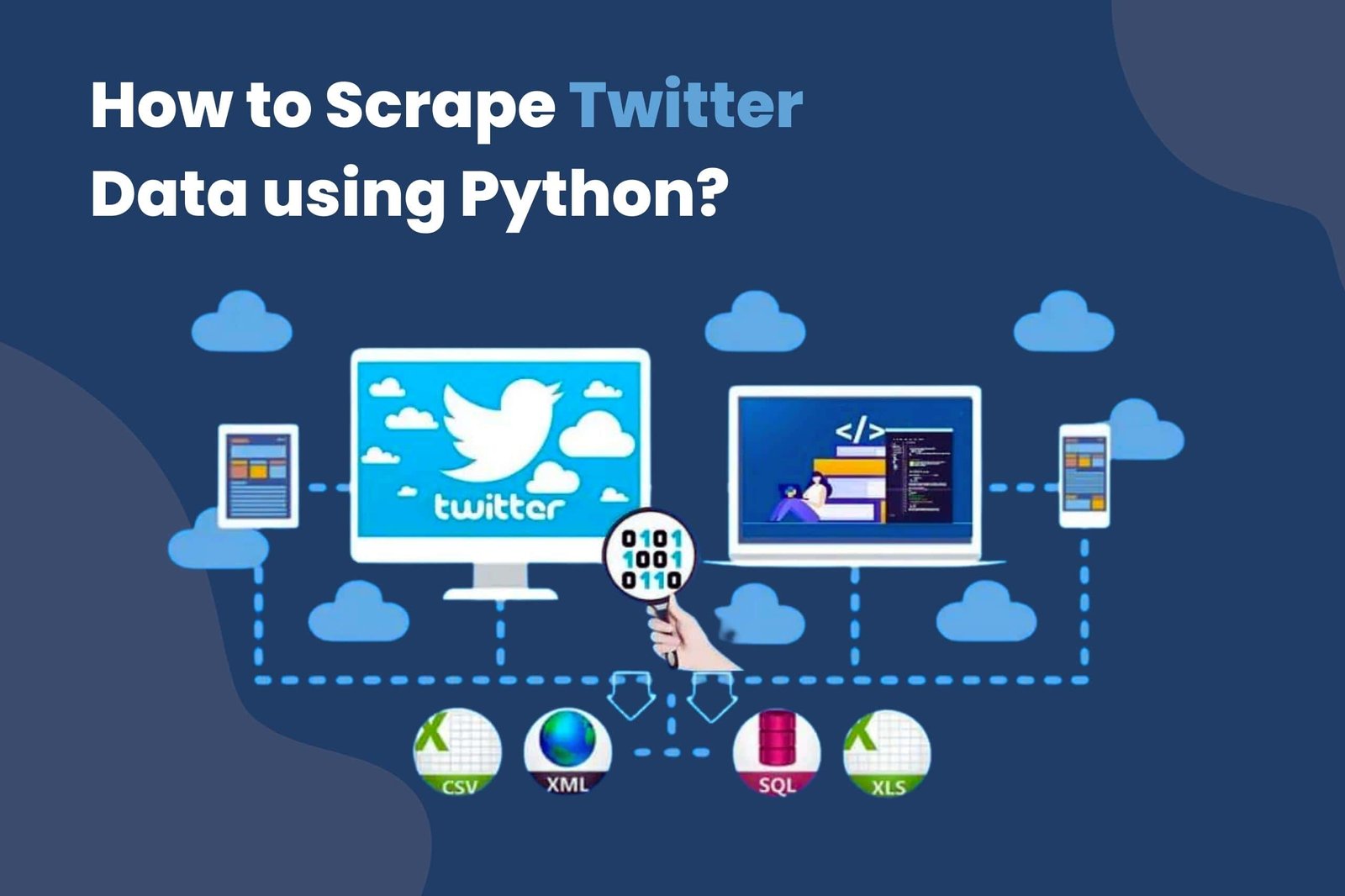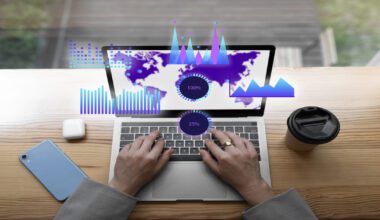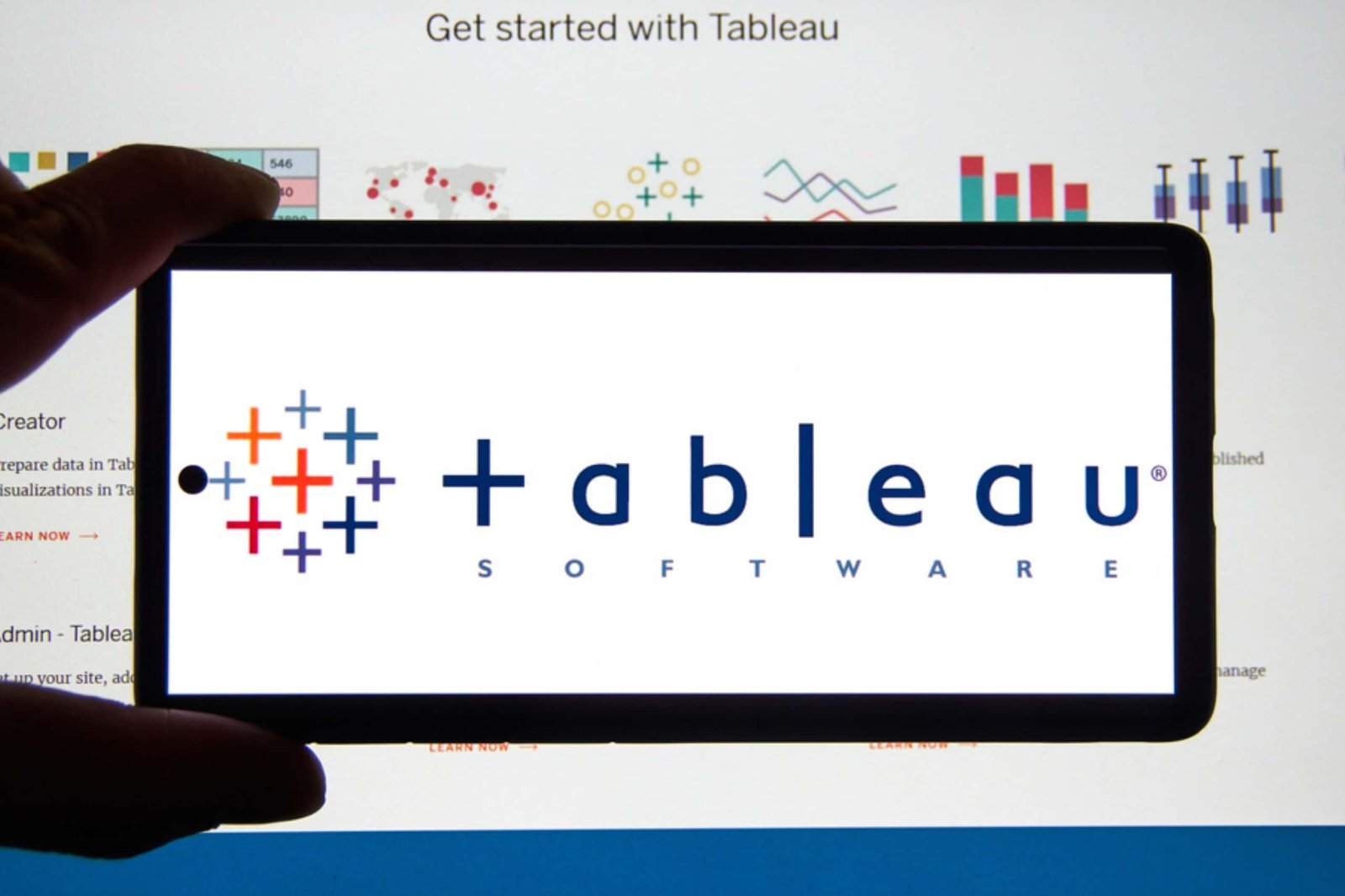Summary: R Programming isn’t just a fad; it’s a powerful tool for Data Science. Discover why R shines in statistics, data visualisation, and boasts a supportive community. Free, open-source, and industry-relevant, R equips you for Data Science success.
What is R in Data Science?
R is an open-source programming language that you can use for free and is compatible with different operating systems and platforms. Since R is an open-source software the community of developers is extremely strong contributing for the development of R.
As a programming language it provides objects, operators and functions allowing you to explore, model and visualise data.
The programming language can handle Big Data and perform effective Data Analysis and statistical modelling. R allows you to conduct statistical analysis and offers capabilities of statistical and graphical representation. Hence, you can use R for classification, clustering, statistical tests and linear and non-linear modelling.
How is R Used in Data Science?
R is a popular programming language and environment widely used in the field of Data Science. It provides a comprehensive suite of tools, libraries, and packages specifically designed for statistical analysis, data manipulation, visualisation, and Machine Learning. Here are some key ways in which R is used in Data Science:
Data Manipulation and Cleaning
R offers powerful libraries such as dplyr and tidyr that facilitate data manipulation tasks. These libraries provide functions for filtering, sorting, aggregating, joining, and transforming datasets. R’s data manipulation capabilities make cleaning and preprocessing data easy before further analysis.
Statistical Analysis
R has a rich ecosystem of packages for statistical analysis. It provides functions for descriptive statistics, hypothesis testing, regression analysis, time series analysis, survival analysis, and more. Packages like stats, car, and survival are commonly used for statistical modelling and analysis.
Data Visualization
R offers several libraries, including ggplot2, plotly, and lattice, that allow for the creation of high-quality visualisations. These libraries enable the generation of a wide range of plots, including scatter plots, bar charts, histograms, boxplots, and more.
R’s visualisation capabilities help in understanding data patterns, identifying outliers, and communicating insights effectively.
Machine Learning
R provides numerous packages for Machine Learning tasks, making it a popular choice for Data Scientists. Packages like caret, random Forest, glmnet, and xgboost offer implementations of various Machine Learning algorithms, including classification, regression, clustering, and dimensionality reduction. R’s Machine Learning capabilities allow for model training, evaluation, and deployment.
Text Mining and Natural Language Processing (NLP)
R offers packages such as tm, quanteda, and text2vec that facilitate text mining and NLP tasks. These packages allow for text preprocessing, sentiment analysis, topic modelling, and document classification. R’s NLP capabilities are beneficial for analysing textual data, social media content, customer reviews, and more.
Big Data Analytics
R has solutions for handling large-scale datasets and performing distributed computing. Packages like dplyr, data.table, and sparklyr enable efficient data processing on Big Data platforms such as Apache Hadoop and Apache Spark. R’s Big Data capabilities enable Data Scientists to work with massive datasets and scale their analyses.
Reproducible Research
R’s integration with Markdown, LaTeX, and R Markdown facilitates reproducible research. It allows Data Scientists to combine code, documentation, and visualisations in a single document, making it easier to share and reproduce analyses. R Markdown documents can be compiled into various formats, including HTML, PDF, and Word.
Data Science Workflow
R provides tools and frameworks that support the end-to-end Data Science workflow. Packages like tidyverse, knitr, and shiny offer a cohesive data import, cleaning, analysis, visualisation, and reporting ecosystem. R’s workflow support enhances productivity and collaboration among Data Scientists.
Features of R- Data Science
R programming language offers several common features that contribute to its popularity and effectiveness in Data Analysis, statistical computing, and graphical visualisation. Some of the key features of R are:
Object-Oriented Programming
It supports object-oriented programming (OOP) paradigm, allowing users to create and manipulate objects. Objects can encapsulate data and functions, providing a modular and organised approach to programming.
Extensive Package Ecosystem
The vast ecosystem of packages contributed by the R community extends the functionality of R by providing additional functions, algorithms, datasets, and visualisations. Users can easily install and load packages to access specialised tools for specific tasks.
Data Structures
It offers various data structures that are essential for Data Manipulation and analysis. The key data structures in R include vectors, matrices, arrays, lists, data frames, and factors. These data structures enable efficient storage and manipulation of data in a structured format.
Functional Programming
R supports functional programming concepts, allowing users to create and apply functions as first-class objects. Functions can be used for data transformation, iteration, and abstraction, enhancing code modularity and reusability.
Interactive Environment
The interactive programming environment by R enables users to execute code line-by-line and view immediate results. This interactivity promotes exploratory Data Analysis and iterative development, making it suitable for Data Scientists and analysts.
Graphics and Data Visualization
The base R graphics system offers a range of plotting functions, while the ggplot2 package provides a powerful and flexible grammar for constructing graphics. R’s visualisation capabilities allow users to create customised plots, charts, and diagrams to communicate data insights effectively.
Statistical Analysis and Modelling
R is widely used for statistical analysis and modelling. It offers a comprehensive set of built-in statistical functions and packages for hypothesis testing, regression analysis, time series analysis, survival analysis, and more. R’s statistical capabilities make it a preferred choice for researchers and statisticians.
Data Manipulation and Transformation
Packages like dplyr and tidyr offer a wide range of functions for filtering, sorting, aggregating, merging, and reshaping data. These tools enable users to clean and preprocess data, extract relevant information, and create derived variables.
Reproducible Research
It promotes reproducible research through literate programming. Tools like R Markdown allow users to blend code, visualisations, and narrative text in a single document, making it easy to generate reports, presentations, and documentation that can be reproduced and updated.
Cross-Platform Compatibility
R is a cross-platform programming language, meaning it can run on various operating systems, including Windows, macOS, and Linux. This cross-platform compatibility allows users to work seamlessly across different environments.
Most common R Libraries for Data Science
In Data Science, you can find several R Libraries and perform different tasks. Some of the best R libraries are as follows:
Dplyr
The dplyr tool is used for performing data wrangling and analysis and make many functions for the data frame in R thus, making it easier to use.
Ggplot2
The visualisation library for R is ggplot2 which is one of the most well-known R Libraries for Data Science. It usually offers a visually appealing mix of graphics that are quite interactive. By describing the connections between the properties of data and the graphical representation, the technique helps in creating visualisation consistently.
Esquisse
One of the most essential tableau features that has been introduced within the R libraries is Esquisse. You can simply drag and drop to complete your visualisation in minutes. It allows you to create bar graphs, curves, scatter plots and histograms. Additionally, it also allows you to export and retrieve the code that generates the graph.
Tidyr
Tidyr is a data cleaning and organising package which we utilise. This data is regarded as tidy when every parameter makes up a table of values and each row indicates an observation.
Shiny
Shiny is a widely used R package. You may use shiny to share your content with others while rendering it visually appealing for them to comprehend and investigate. It is a Data Scientist’s best friend. Accordingly, Caret represents regression as well as classification training. This tool may mimic difficult regression as well as classification issues.
E1071
This package implements the case of clustering Fourier Transform, Naive Bayes, SVM, and other types of interesting algorithms.
Mlr
This package is nothing short of outstanding for performing artificial intelligence tasks. It literally has all of the technologies required for Machine Learning jobs. Further, another name for it is an extendable structure that supports regression, categorization, clustering, multi-classification, and statistical analysis of survival.
Applications of R for DataScience
Data Analysis and Visualization
R offers a wide range of packages and functions that enable efficient Data Analysis and visualisation. For example, the dplyr package provides a set of functions for data manipulation, such as filtering, sorting, and aggregating data.
Suppose you have a dataset of customer transactions and want to analyse the total sales by product category. Accordingly, using dplyr, you can filter the data for relevant columns, group it by the product category, and calculate the sum of sales.
Statistical Modelling and Machine Learning
R provides numerous packages for statistical modelling and Machine Learning tasks. The caret package, for example, offers a unified interface for building and evaluating predictive models. Suppose you want to develop a classification model to predict customer churn.
Using caret, you can train and evaluate various algorithms, such as logistic regression, decision trees, and random forests, and select the best-performing model based on evaluation metrics like accuracy or AUC.
Reproducible Research and Reporting
R facilitates reproducible research and report generation through tools like R Markdown. With R Markdown, you can seamlessly integrate code, visualisations, and text in a single document, allowing for the easy generation of reports, presentations, and research papers.
You can include the results of your Data Analysis, visualisation, and modelling, along with your interpretations and conclusions, in a comprehensive and interactive document.
Top Reasons to Learn R Programming for Data Science
In the realm of Data Science, R programming reigns supreme. It’s more than just a language; it’s a powerful tool that empowers you to wrangle data, unearth hidden patterns, and craft stunning visualisations. But why choose R over other contenders like Python? Here are the compelling reasons to add R to your Data Science arsenal:
Statistical Powerhouse
R boasts a robust statistical foundation. It’s practically built for statistical analysis, offering a comprehensive library of pre-built functions for hypothesis testing, regression modelling, and an array of statistical techniques. This makes R a favourite among researchers and statisticians who delve deep into the intricacies of data.
Visualisation Champion
Data visualisation is the art of transforming numbers into a compelling story. R shines in this arena, offering a rich tapestry of graphical packages like ggplot2 that produce publication-quality visualisations. From intricate scatter plots to insightful boxplots, R empowers you to create clear and informative visuals that bring your data to life.
Active Community and Extensive Resources
Never feel like a lone coder in the R wilderness. R boasts a large and active community of passionate users. Online forums, tutorials, and user-generated packages provide a wealth of resources to troubleshoot challenges, learn new techniques, and stay updated on the latest advancements in the R ecosystem.
Open-Source and Free
In the Data Science world, budget can be a concern. Here’s where R shines again. It’s a free and open-source language, accessible to anyone with a computer. This eliminates licensing costs and fosters collaboration, as anyone can access and utilise R for their Data Science projects.
Industry Adoption and Marketability
R isn’t just an academic darling; it’s embraced by leading companies across various sectors. From tech giants like Google and Facebook to research institutions and pharmaceutical companies, R is a sought-after skill in the Data Science job market. Mastering R can give you a significant edge in your Data Science career pursuits.
A Gateway to Other Languages
Learning R is an excellent springboard for exploring other Data Science languages. The logical thinking and problem-solving skills honed in R translate well to other programming languages like Python. This makes R a valuable stepping stone for those who wish to expand their Data Science skillset.
Conclusion
From the above blog, you get to learn about R Programming for Data Science and its features. Additionally, you learn about the ways in which R is utilised along with the top R programming libraries that helps you through Data Visualisation and manipulation.
If you’re an aspiring Data Scientist who wants to explore their career, pursuing an online course in Data Science will be helpful.
Online certifications ensure that you develop your skills and competencies effectively. You can easily learn R for Data Science through the available online courses in Pickl.AI that will help you enhance your efficacy and conduct data visualisations.
Frequently Asked Questions
Is R Better Than Python for Data Science?
There’s no clear winner. Python offers wider application, while R excels in statistics and visualisation. If your focus is heavily on statistical analysis and creating impressive visuals, R might be the edge you need.
I’m New to Coding. Is R Too Difficult to Learn?
The learning curve can be steeper than Python, but R offers a wealth of resources. Online tutorials, active communities, and a focus on statistics can make it manageable, especially for those with a strong foundation in maths.
Is R Still Relevant in Today’s Data Science World?
Absolutely! R remains a dominant force in statistical analysis and data visualisation. Its free and open-source nature, coupled with a thriving community, ensures its continued relevance in the Data Science landscape.






